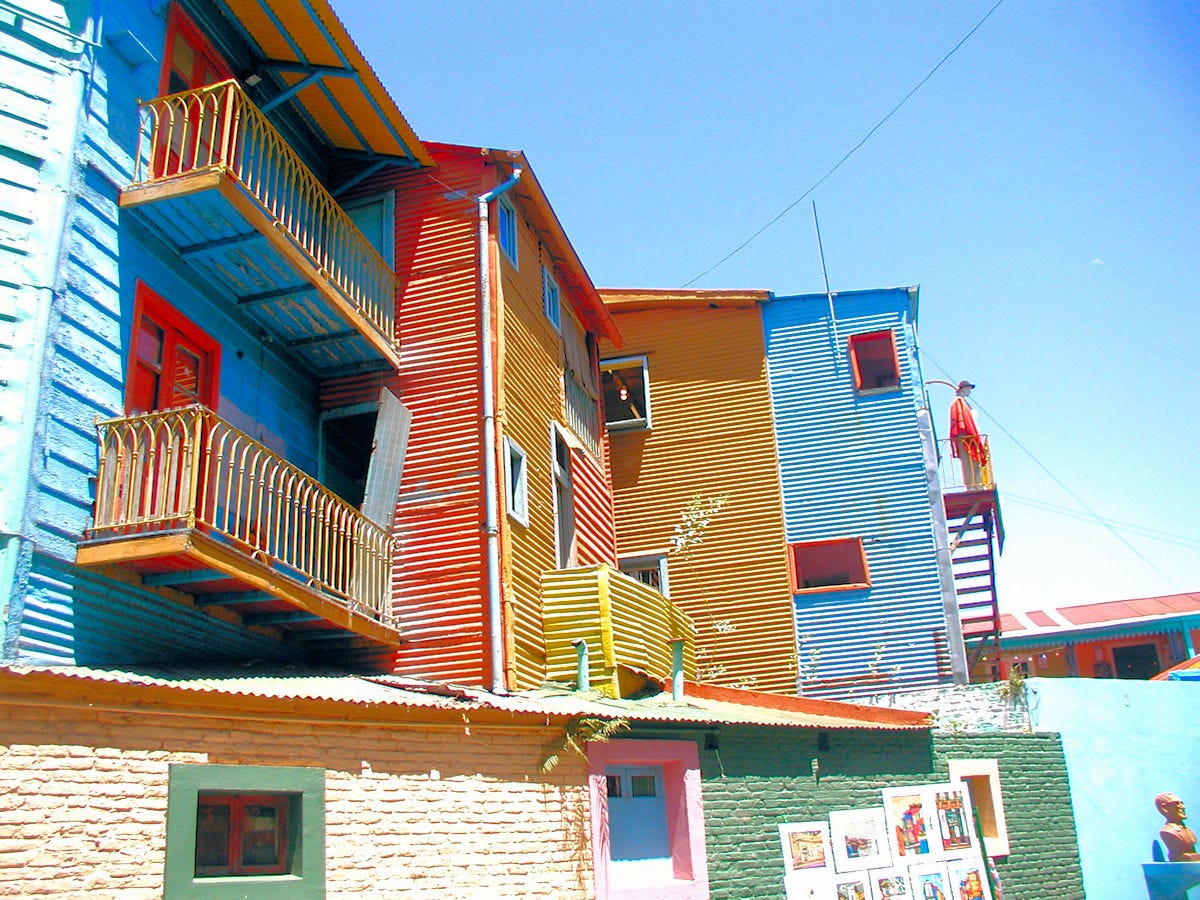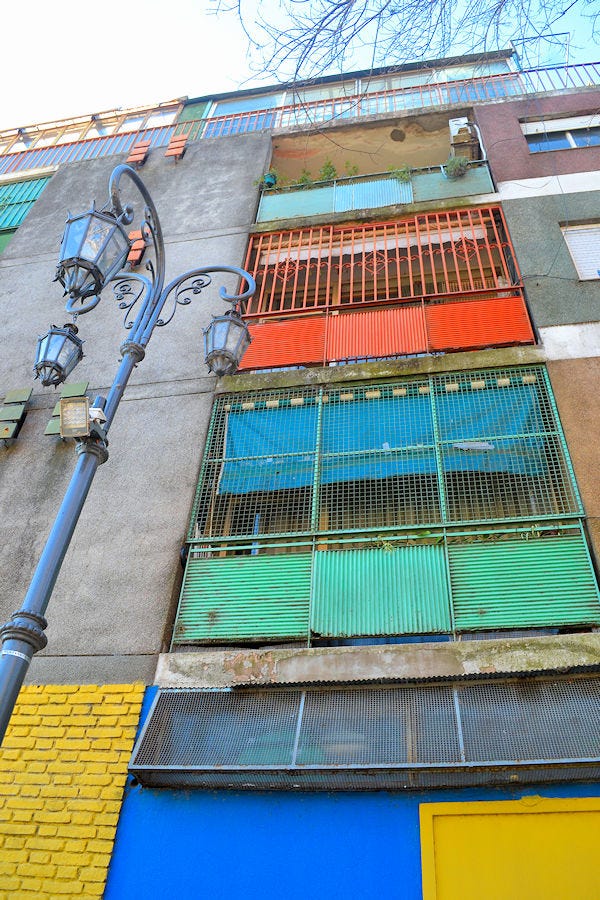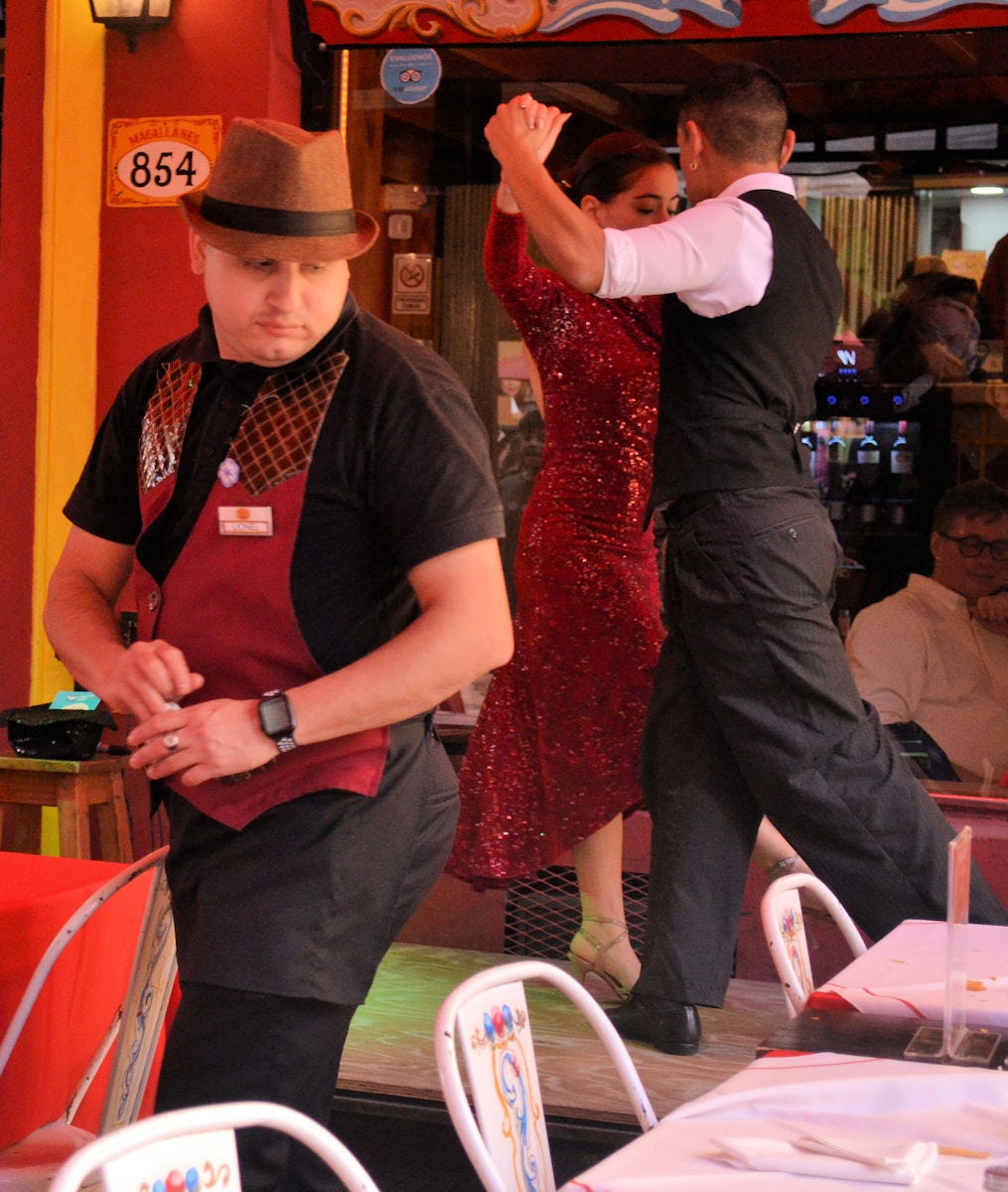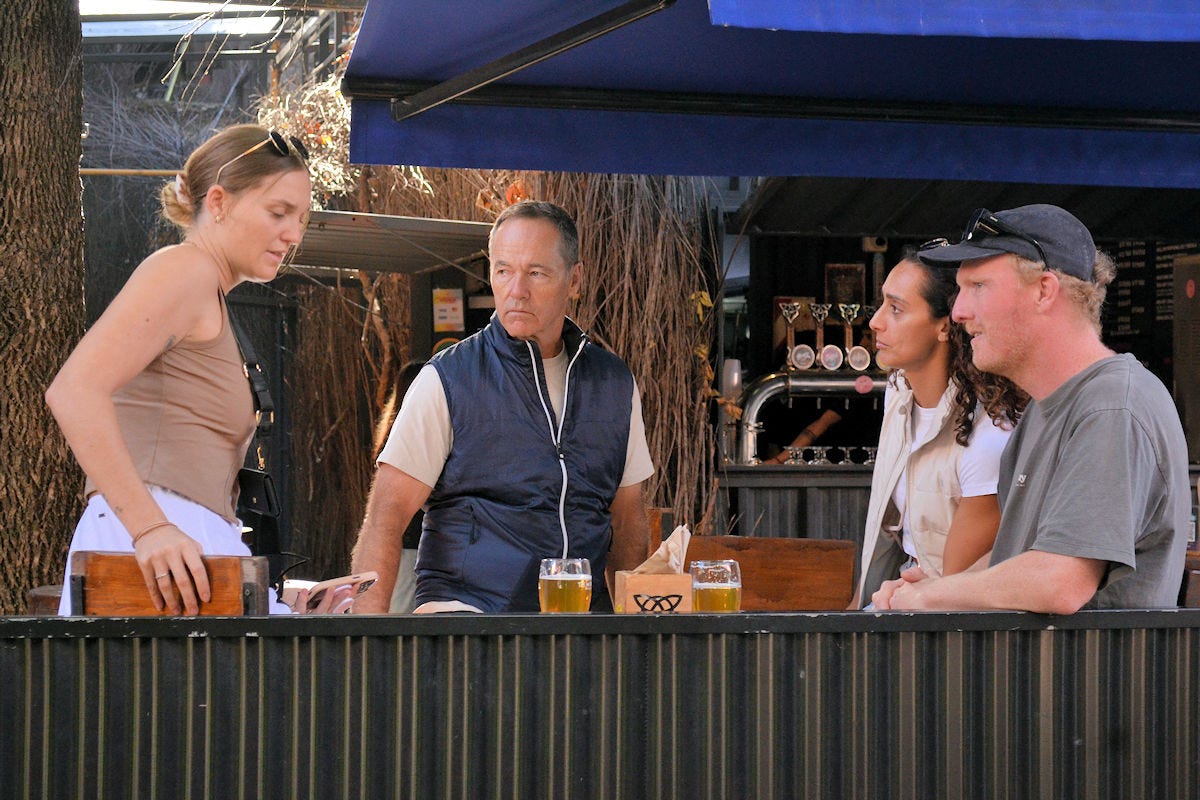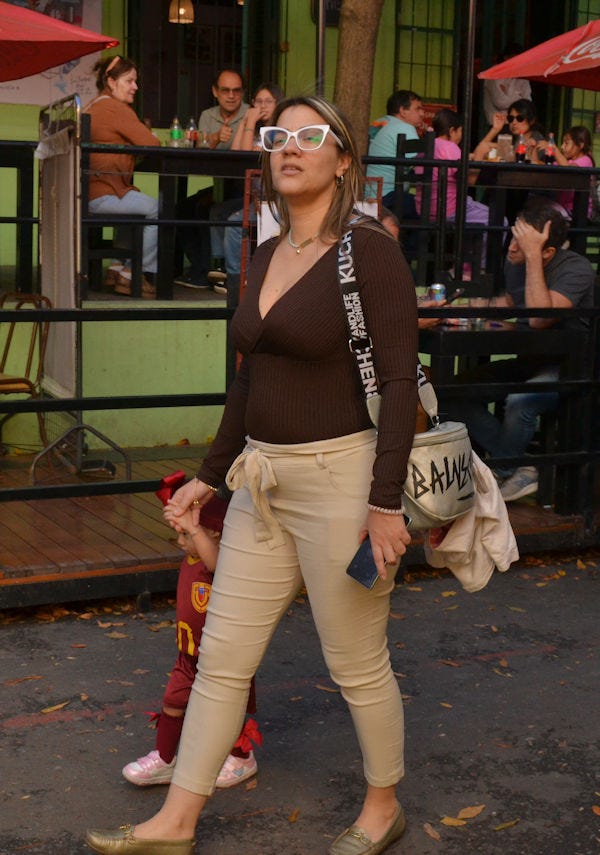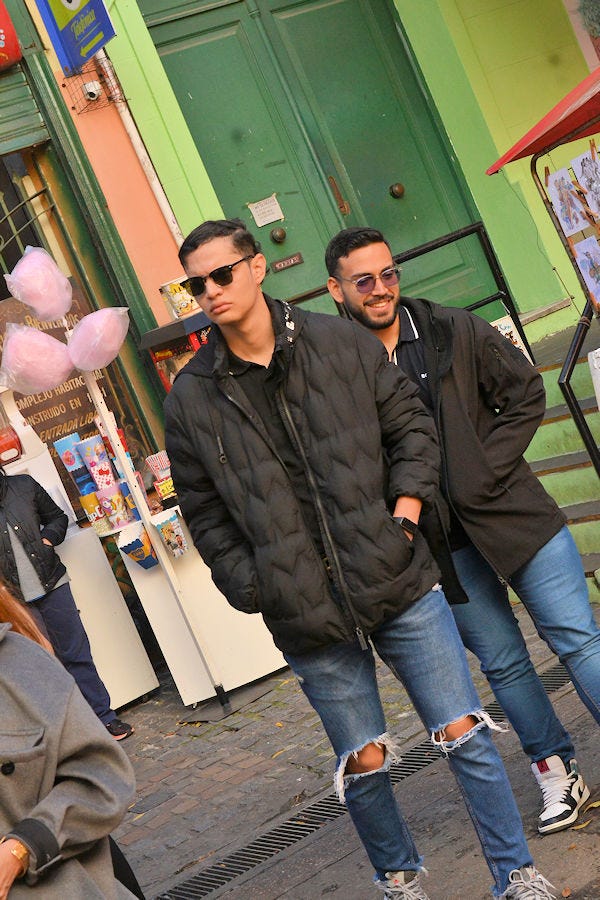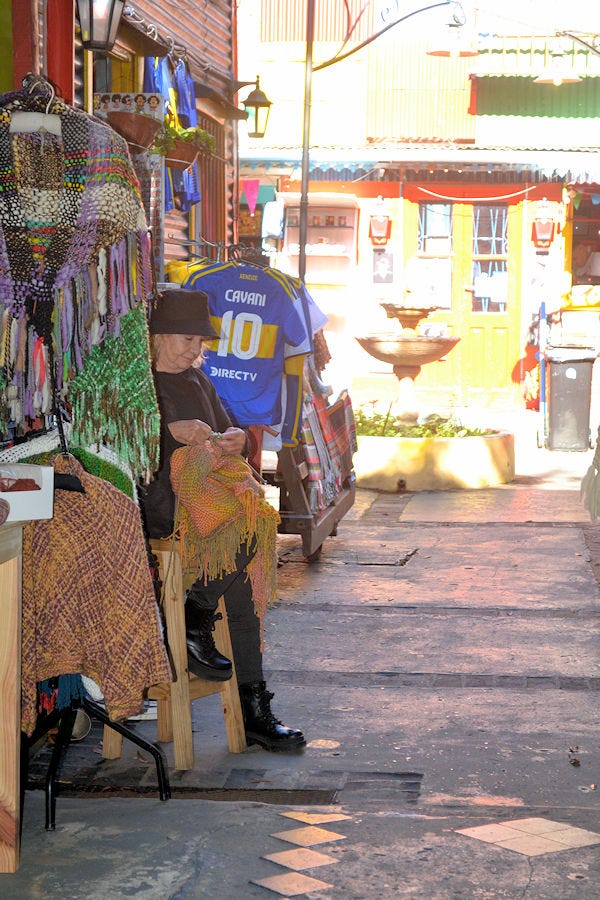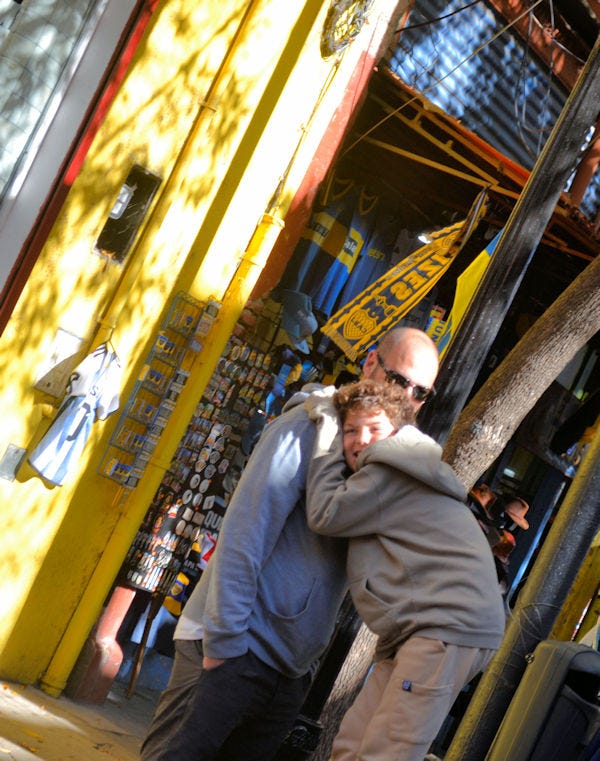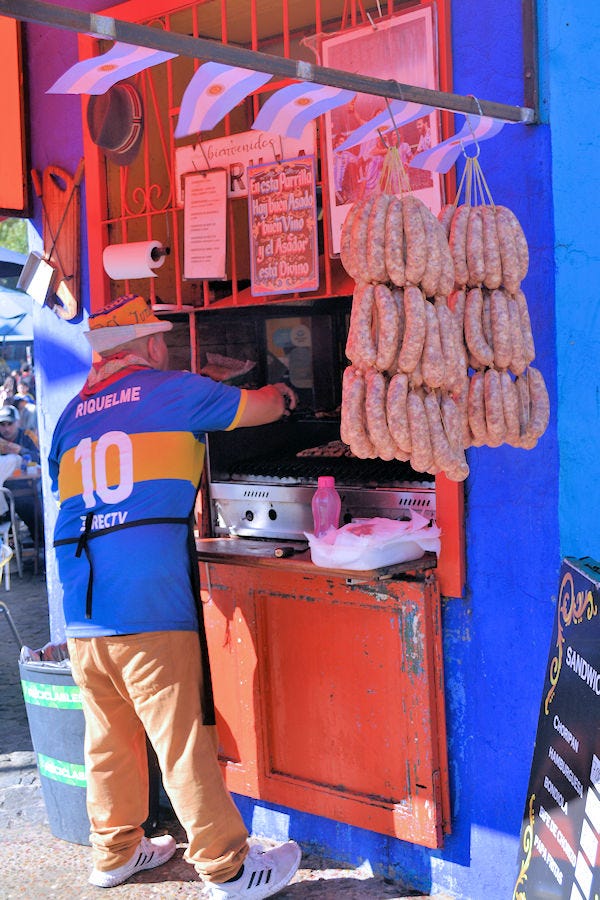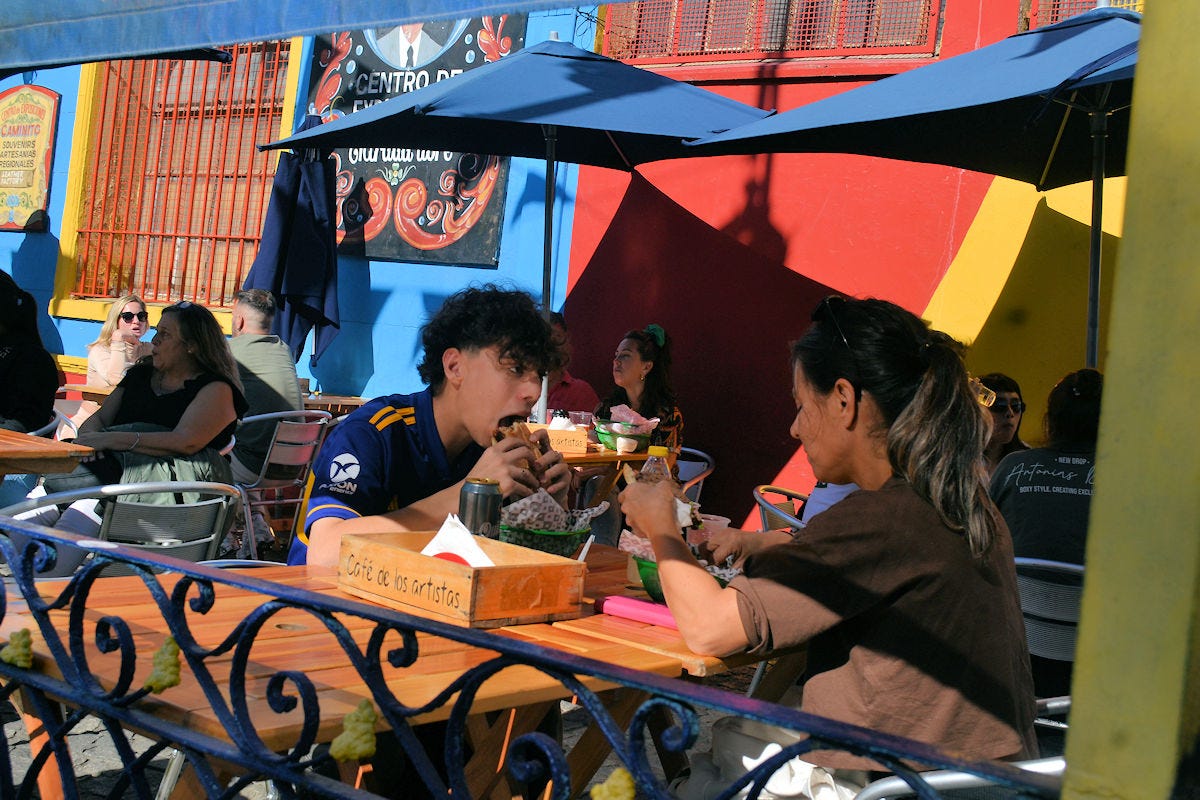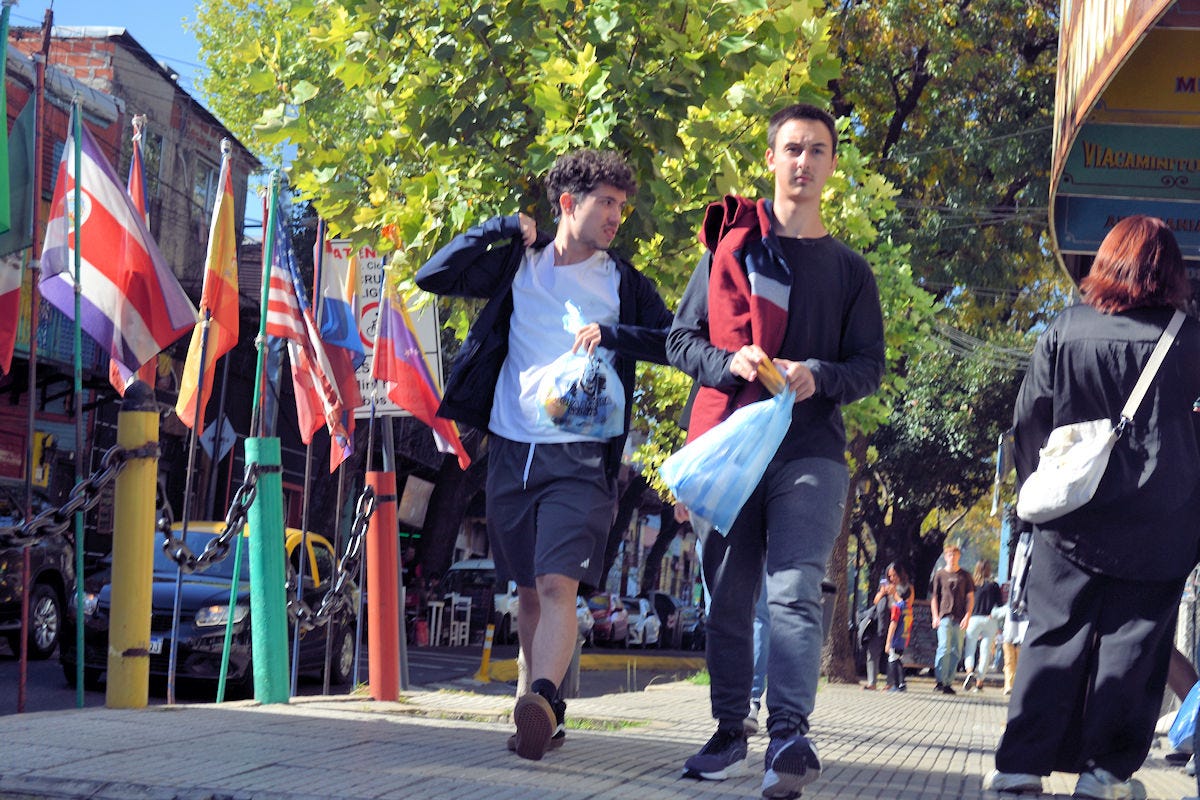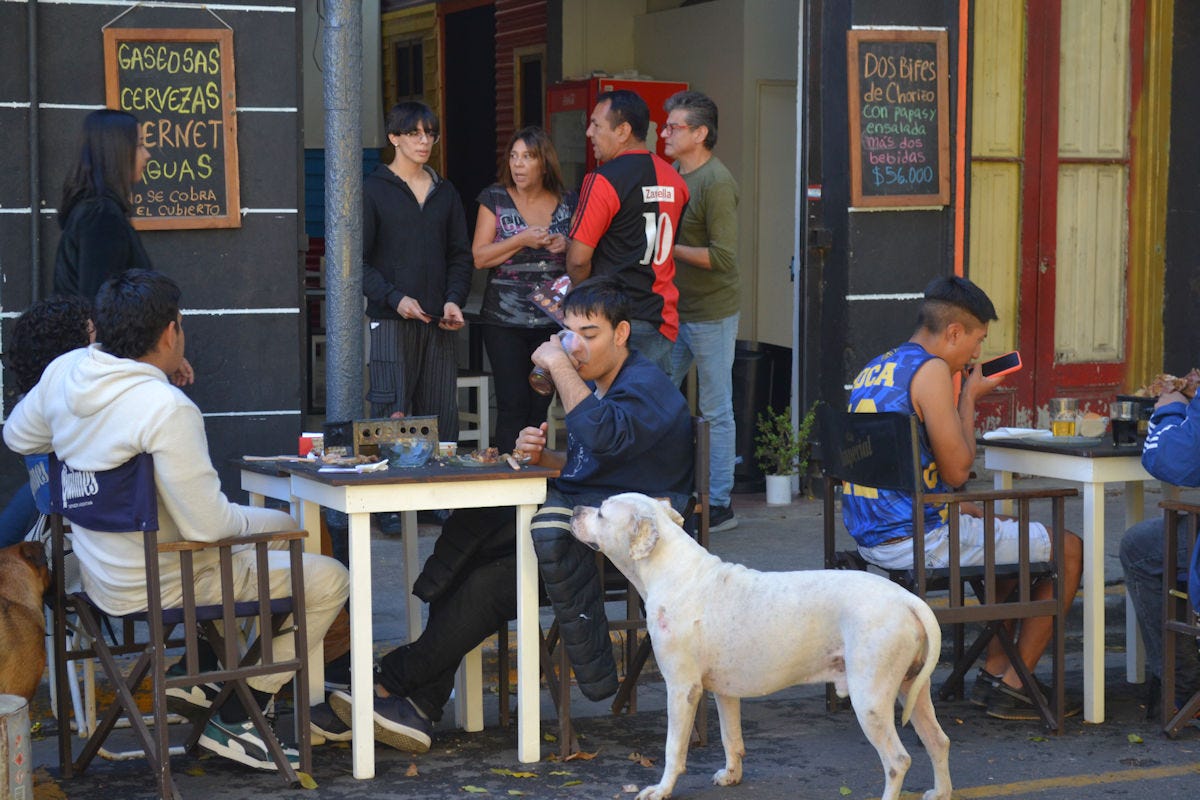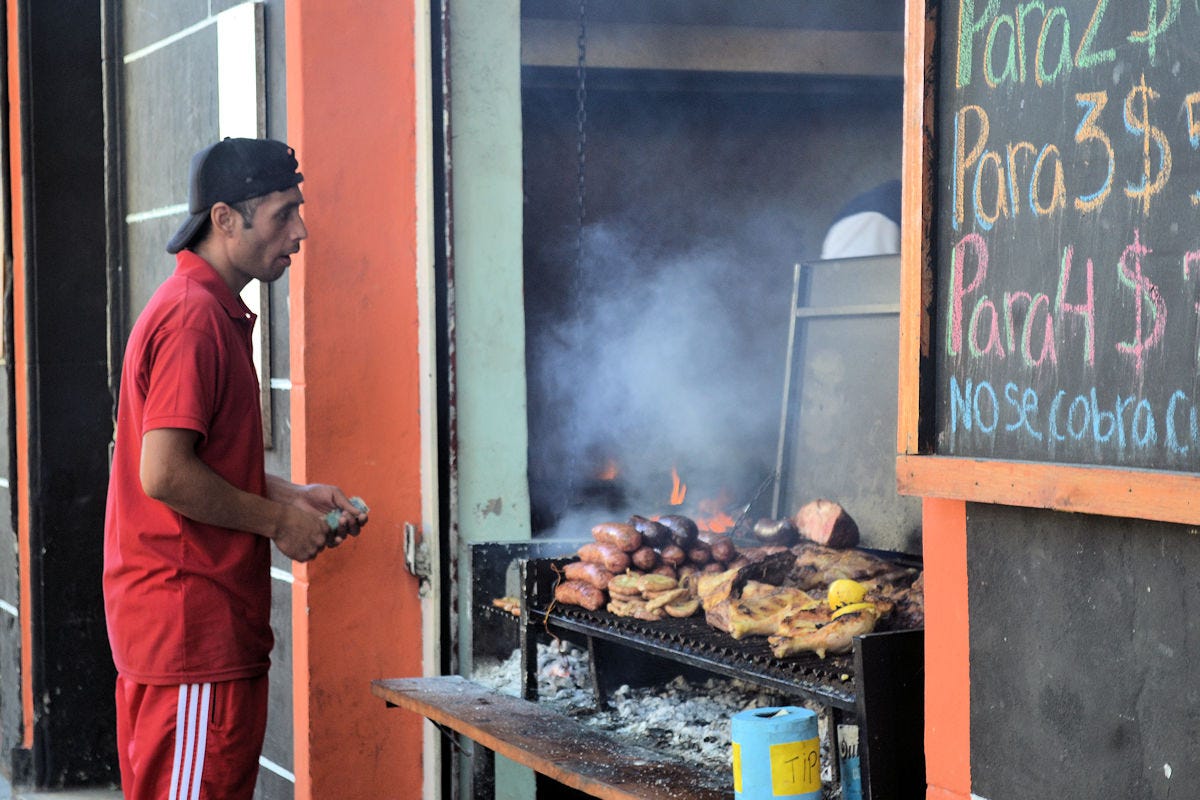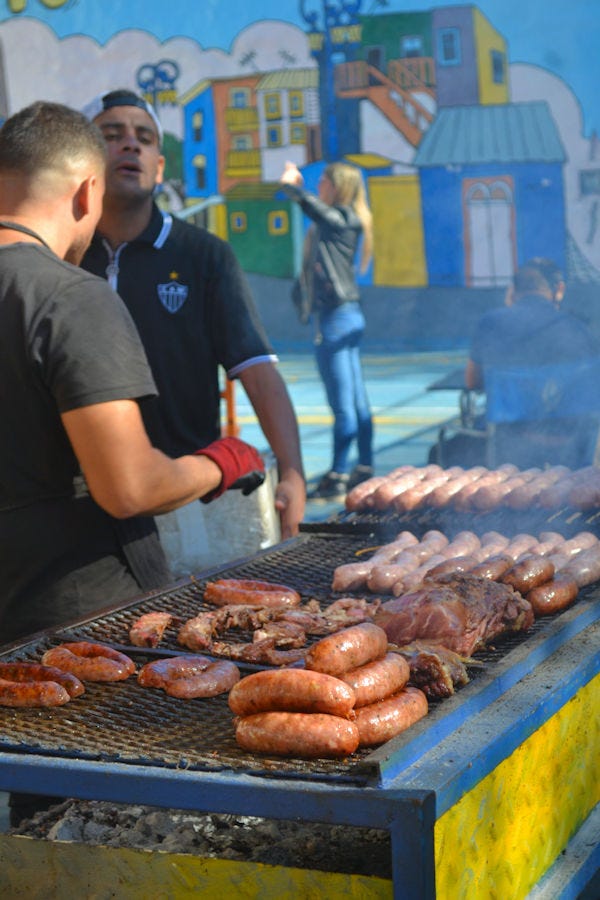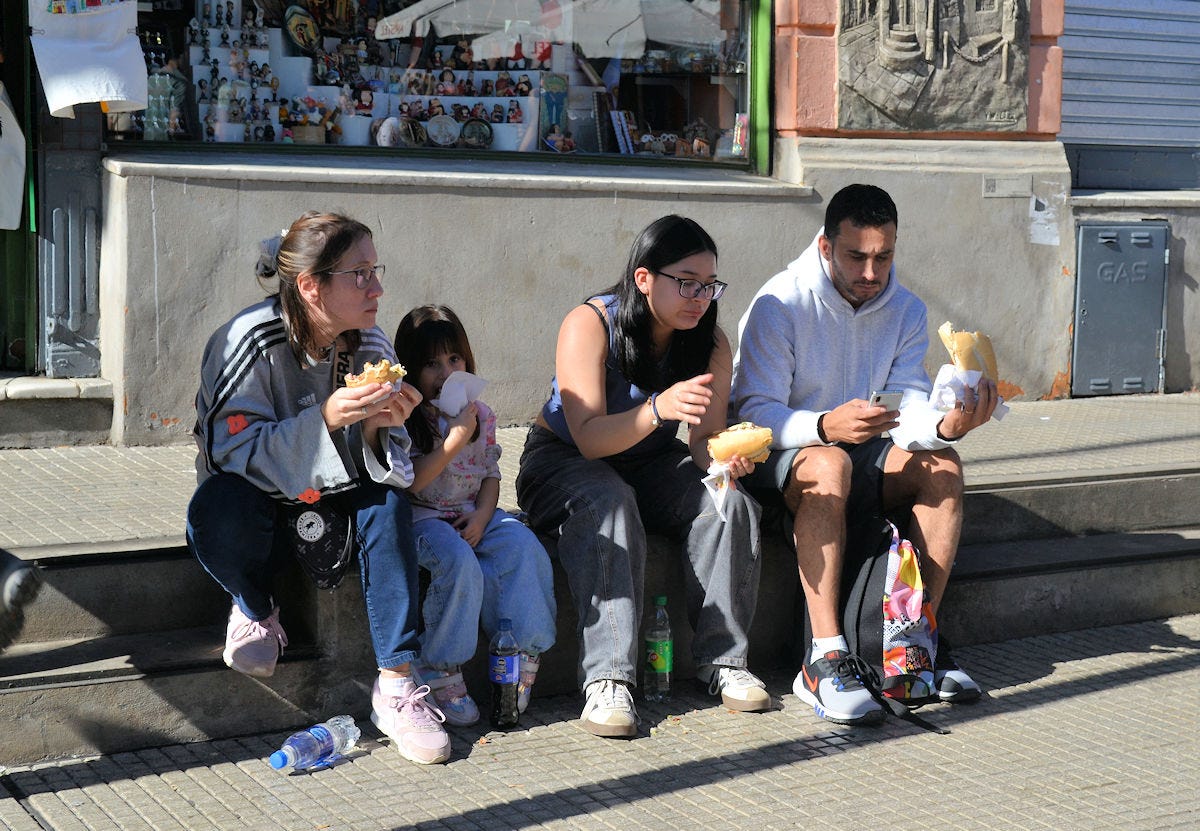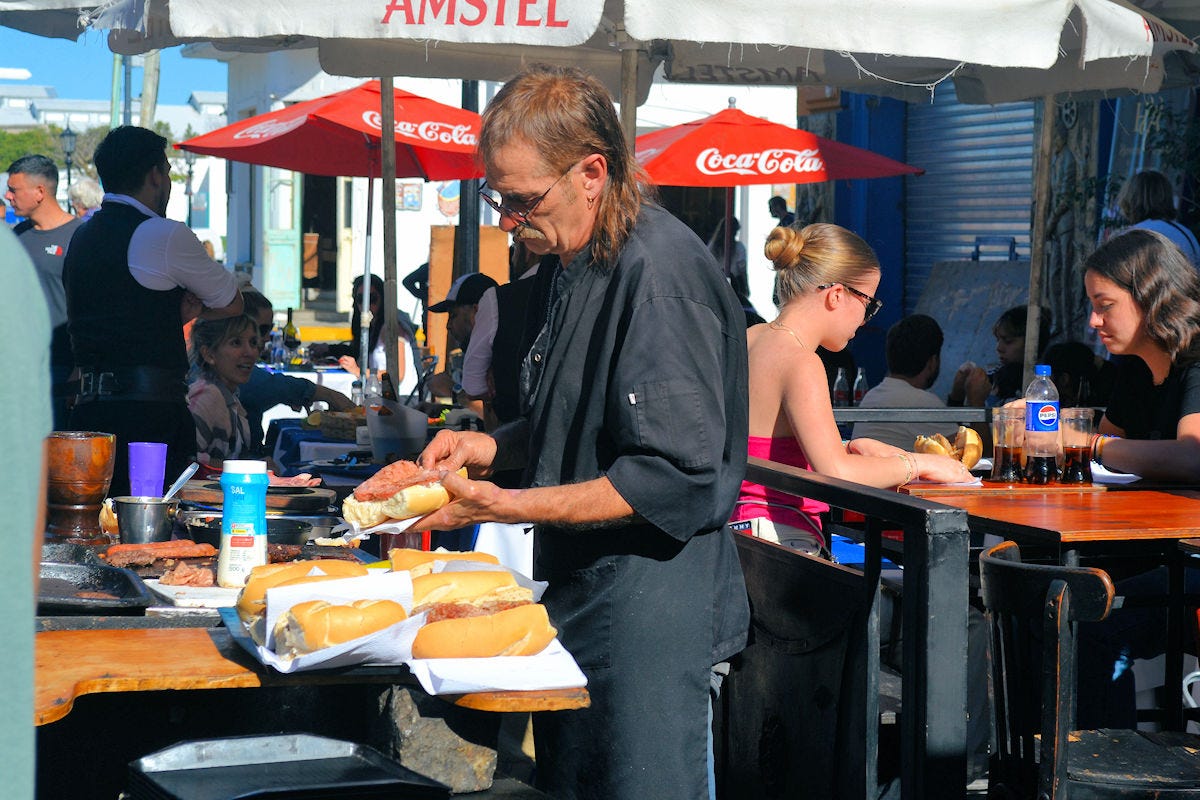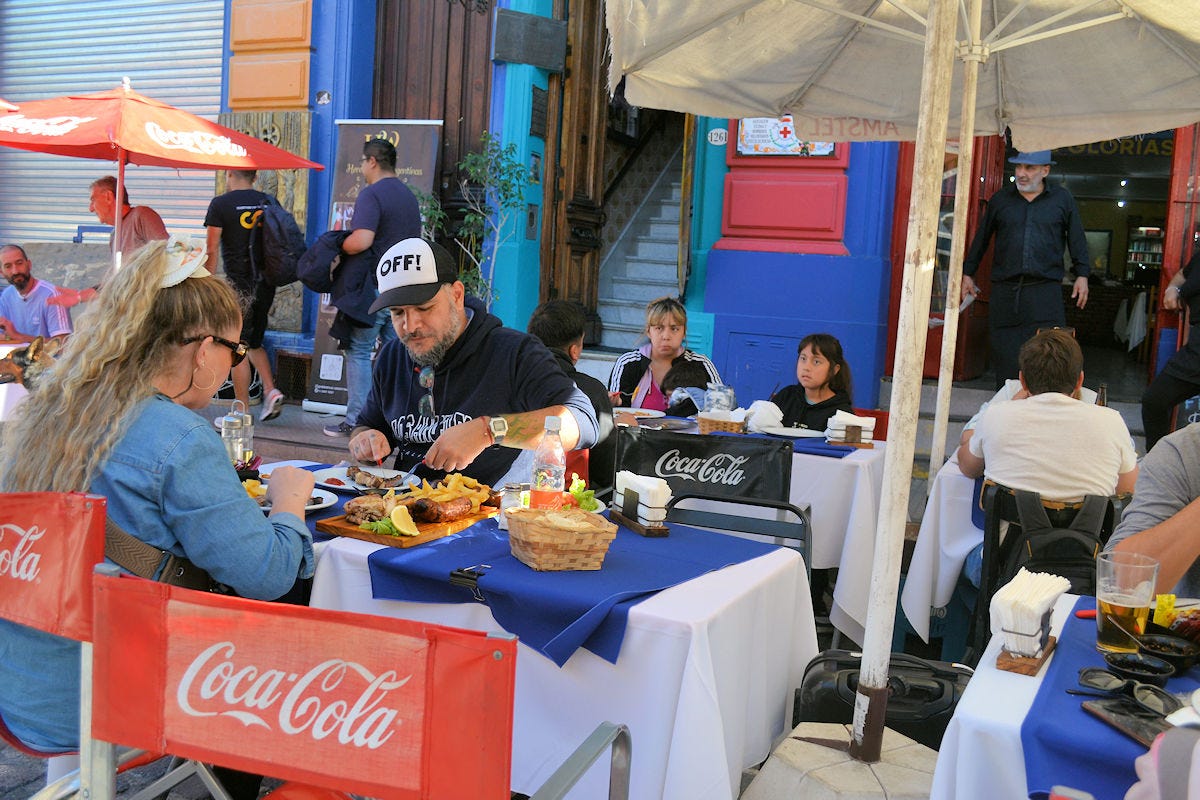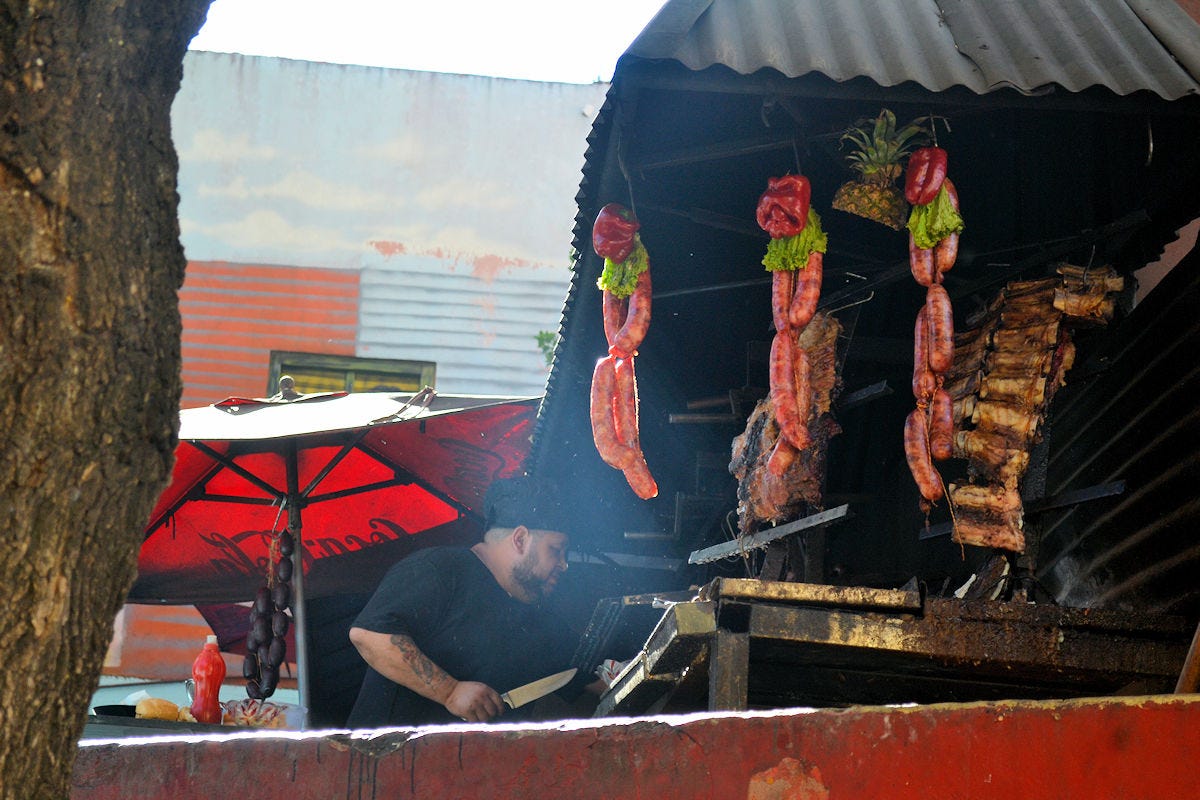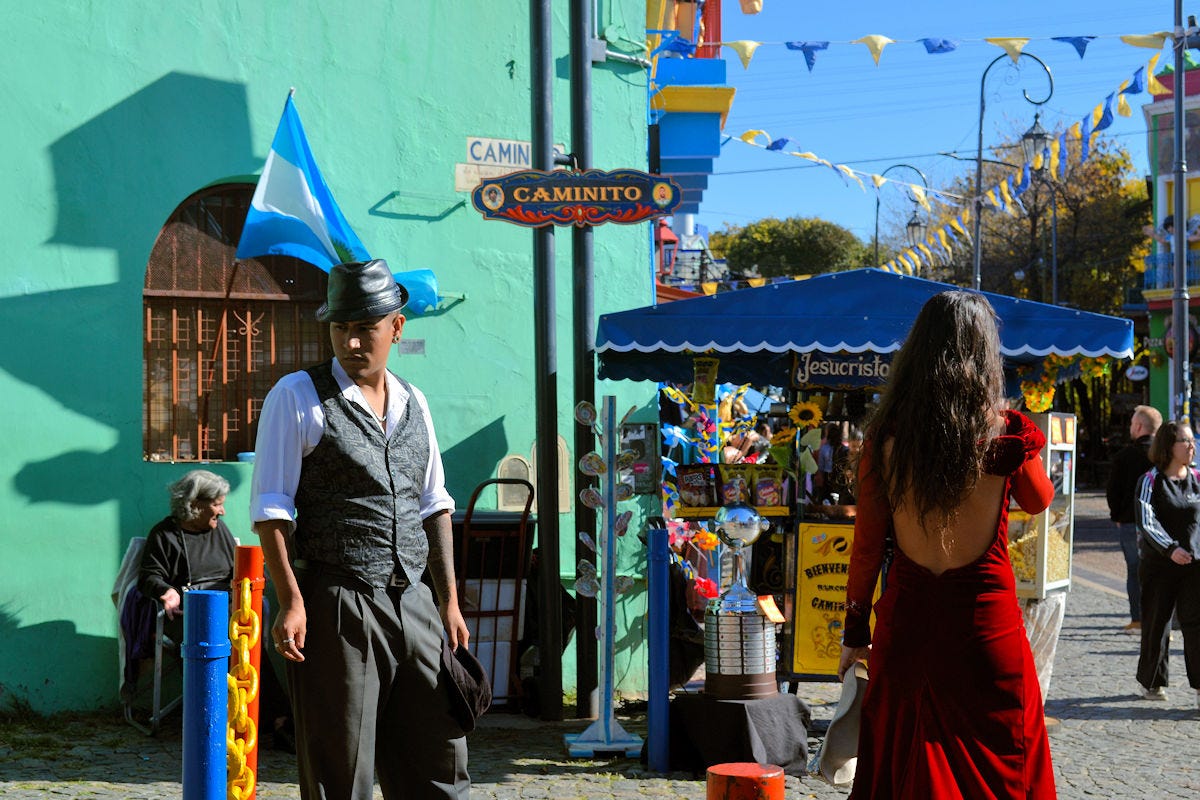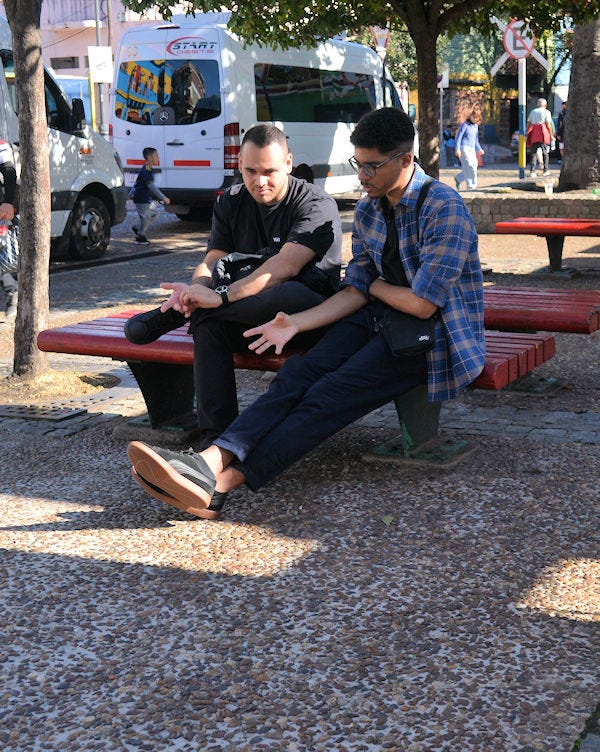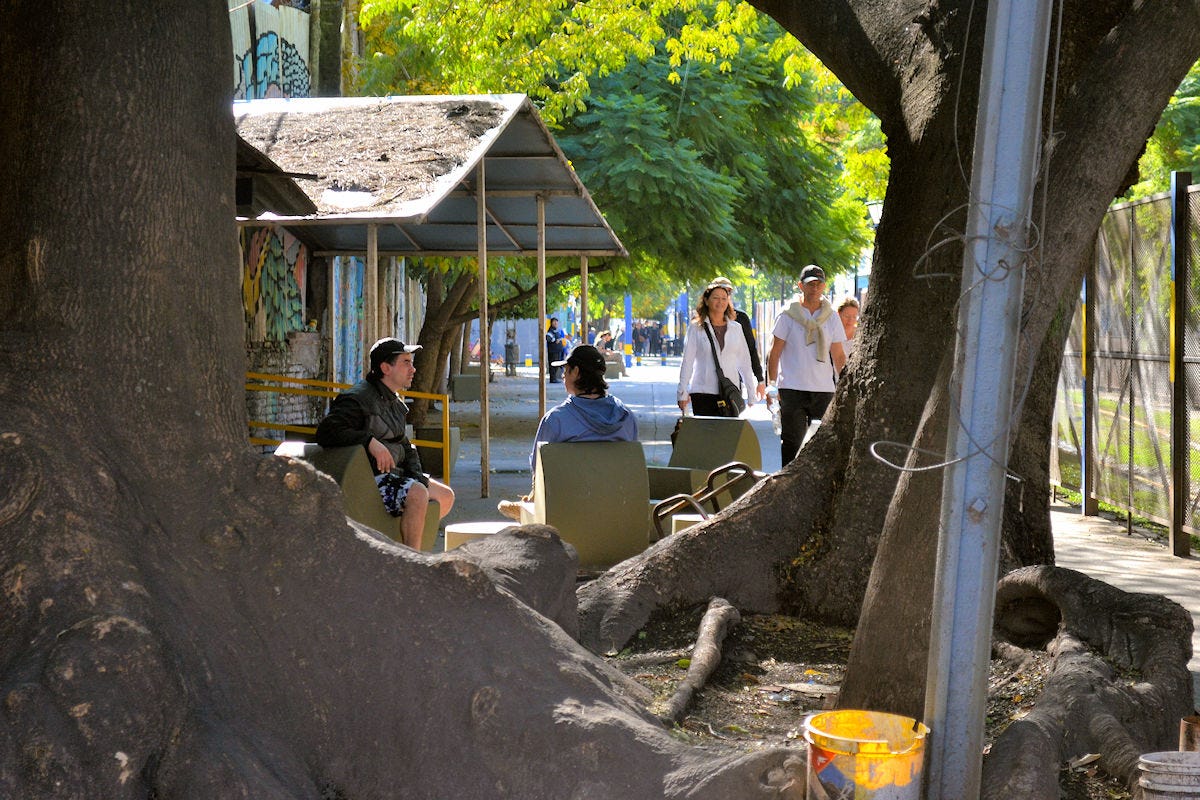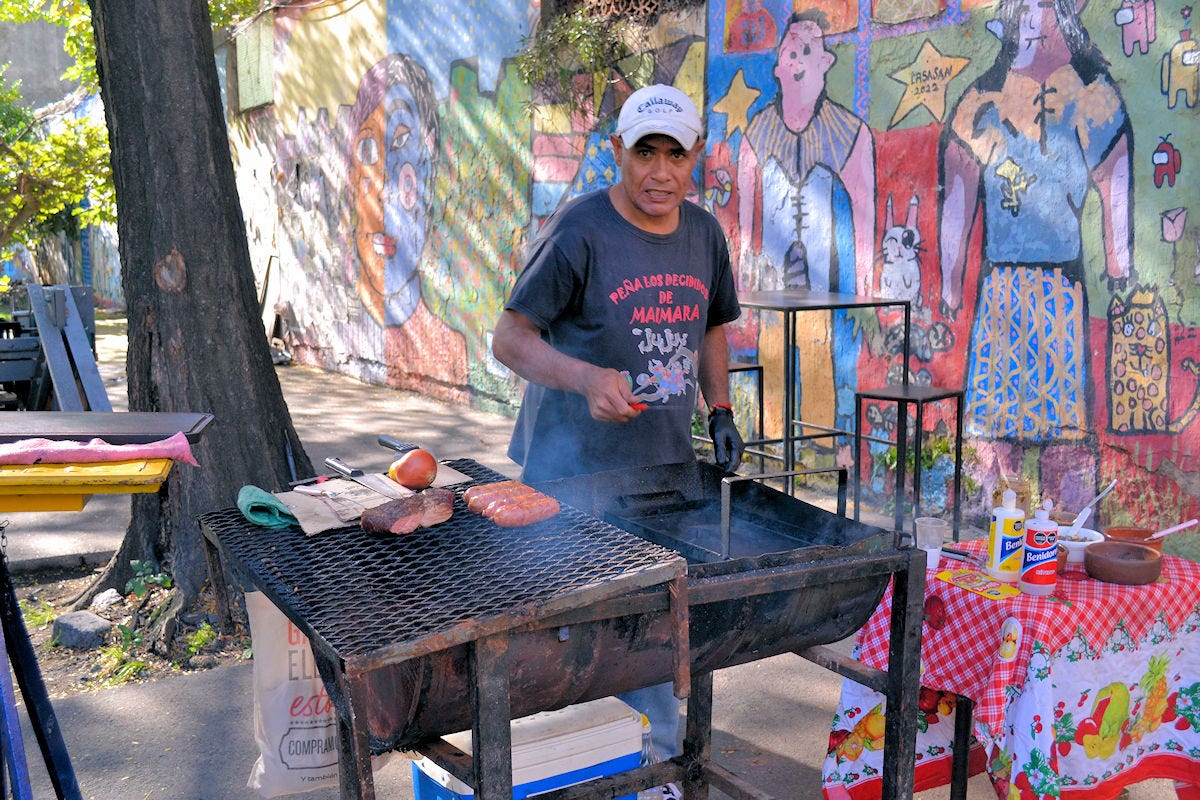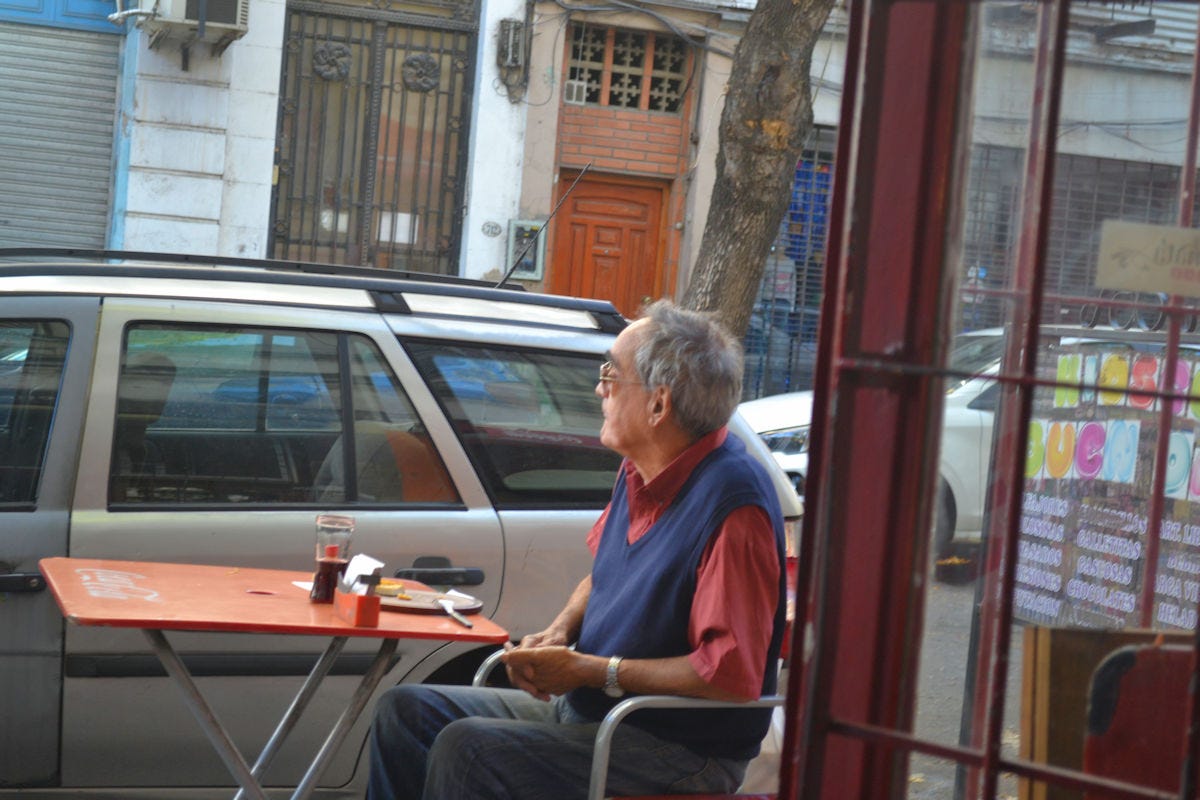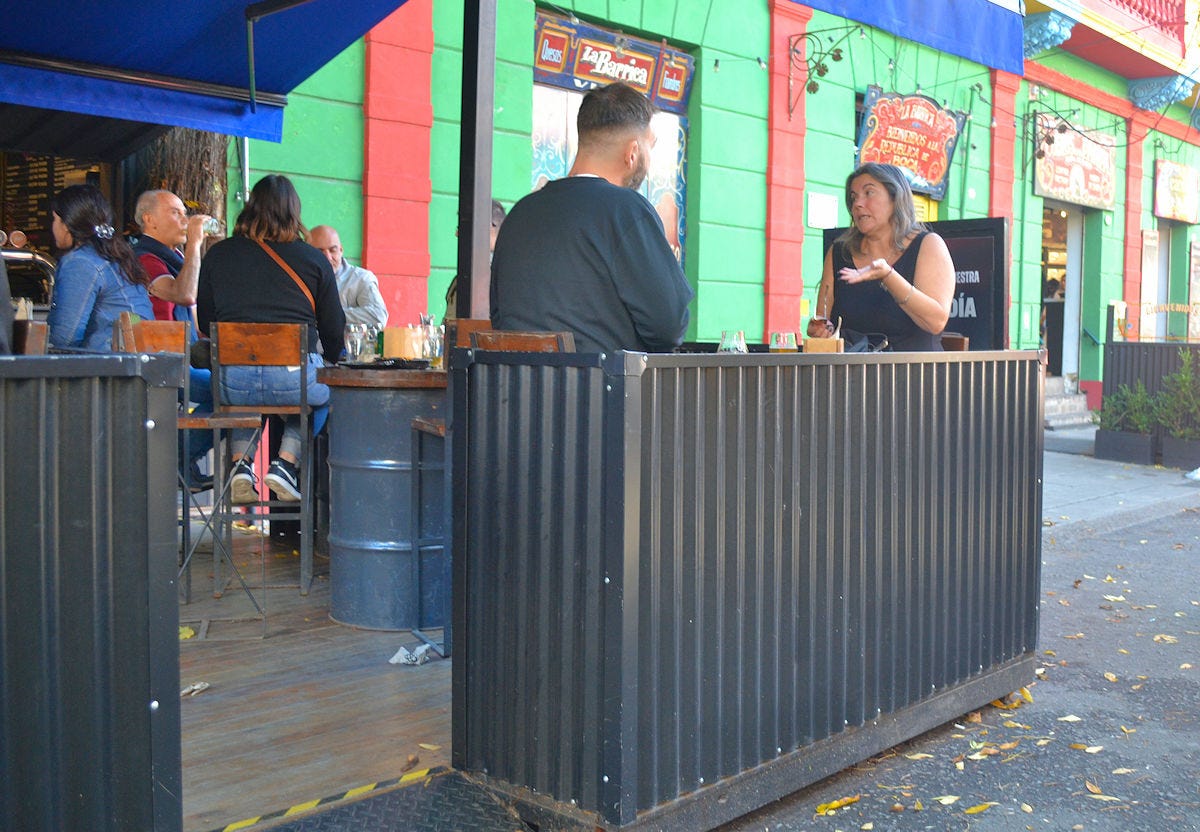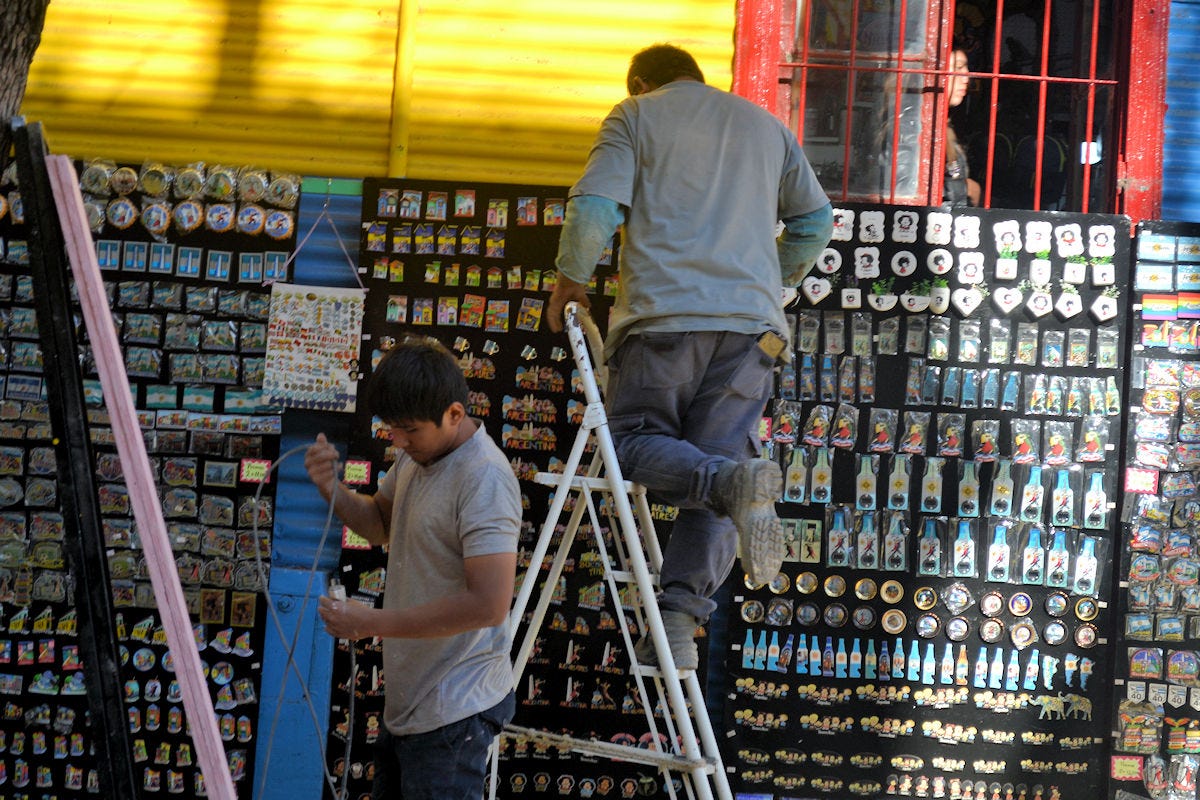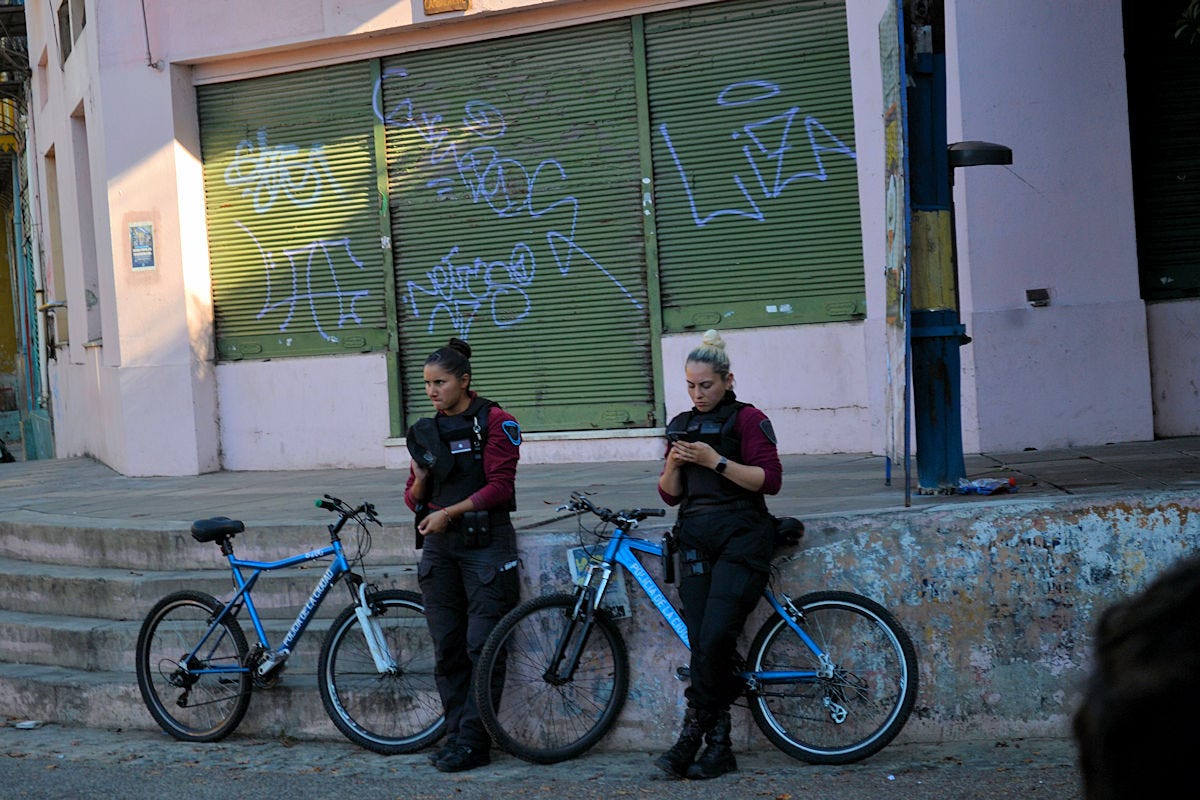People of the Walk
In which I explore the Caminito, BA's postcard tourist trap, looking for something more than colorful paint.
Postcards abound of Buenos Aires with rows of bright colored buildings along what appears to be a whole waterfront area, the Caminito (“Little Walk”). It’s practically the symbol of the city in some tour guides. And, if you go, you’ll find them, not near as many as the postcards make it look, not quite as vibrant as the retouched photos make it appear, and a mere couple of square blocks. The amazing street fair with tango dancers everywhere will be reduced to a scattered few, pimping for spare change on the streets. Mostly what you’ll get is a lot of shilling for souvenir shops and mediocre restaurants. In general, other than a few touristy trips with friends, and some visits to nearby museums, I avoid the Caminito like the plague that it is (it also stinks, being located right along a sewage and garbage filled stretch of the Riochuela River – somewhat cleaner these days than it was a few years ago, but only right in front of the touristy area. I never recommend it to visitors, anymore than I’d recommend some place like South Street Seaport in NYC.
Origin stories of stealthy theft of leftover shipyard paint, and a grassroots movement to beautify their homes are rampant. The real story is that while it may have been a dockworkers’ neighborhood, it was neither colorful nor playful. It was so rundown it was considered a condemned blight in the city. Local artist Benito Quinquela Martin, whose eponymous museum is located right along the waterfront, petitioned the city in 1954 to undertake turning the neighborhood into a street art project. He and his students restored buildings, painted them “pastel colors” (really? those are not what I call pastels), and pushed for the whole touristy thing. The project was, more or less, complete in 1960, though it took another decade to finish off touches here and there and get people to even think about coming to the area. And my sense is that it has rarely been touched up since.
I joined a new local Meetup group offering its first outing of street photography, and the organizer having picked the Caminito as her first target. Twenty of us reserved for the event, about a dozen showed up. For me, both a chance to do something moderately social and to pull out my real camera that I rarely use - phone cameras have become so good these days, and the phone so much easier to carry, that I rarely think about it. But this was a chance to play a bit.
Now, most people take lots of photos of the colorful buildings, the tango dancers, and selfies with various cutouts that make them appear to be local figures. And the hostess of our Meetup had selected the area specifically because of the colorful backdrop. But I’d like to suggest that color as a verb, not just as a noun, comes into play when exploring a neighborhood. The people, both those who live and work there, as well as those who are momentary visitors, color the experience as much as any paint might. Given my bent towards food and drink, I focused on the people preparing meals and eating meals, as well as a few random shots of folk who just contributed to the whole atmosphere.
Prepare for about two dozen or so photos, no commentary….
I’m looking forward to further outings with this group!


